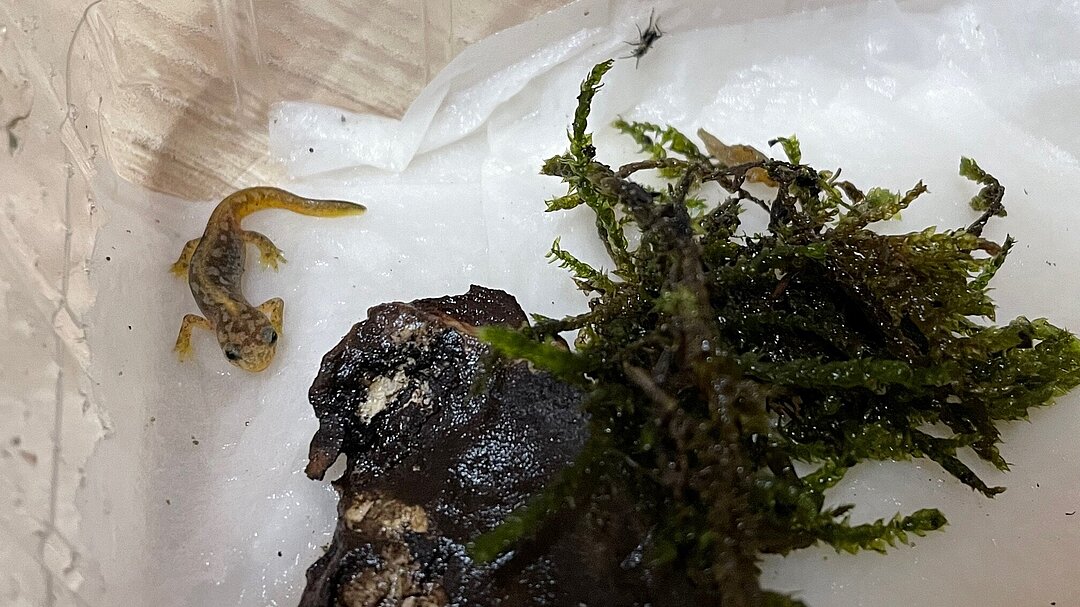
As the name suggests, alpine newts can be found at high altitudes. Their habitat extends up to 2,000 m above sea level in the Alps, where they live in meadows and moors. However, alpine newts also live in lowlands and feel most at home in forested areas.
Alpine newts are amphibians: adults live both on land and in water. From May onwards, they migrate to puddles, ponds or similar water bodies with flat shore zones, hiding places and not too dense aquatic plant growth to breed and lay their eggs.
From gill to lung and skin respiration: A natural metamorphosis
The alpine newt is a highly adaptable species that inhabits a wide variety of water bodies and terrestrial habitats. Baby newts spend the first stage of their life solely in the water. At around three months old, the larvae metamorphoses into terrestrial juvenile efts. In the eft phase, the young are still legless, but have a distinct long keeled tail. They will also quickly grow frilly external gills at an optimum development temperature of around 20°C. A few weeks later, they will develop their front legs first. Then after a few days the emerging hind legs should be visible. This development stage distinguishes newts from frogs: in the case of the latter the hind legs are the first to develop. During the metamorphosis (and learning to crawl on land) the gills are absorbed and replaced by air-breathing lungs.
Hellabrunn Zoo supports research on salamander plague
Since 2021, Hellabrunn Zoo has been supporting the Amphibian Conservation Fund, which is dedicated to research on the salamander plague. The disease is caused by a deadly skin fungus known as Bsal (Batrachochytrium salamandrivorans) that threatens not only salamanders, but also alpine newts in the Germany-Belgium-Netherlands border triangle. Native amphibians have hardly any defence mechanisms against the pathogen, which originates from Southeast Asia. The fungi eat away at the animal's skin, a vial organ for amphibians, especially those who breathe and drink through their skin. The fungal infection is therefore usually fatal for amphibians. It is still largely unknown how it affects different species of newts.
"Our commitment to protecting and preserving local biodiversity is just as important as the numerous in-situ conservation projects for endangered species that Hellabrunn Zoo supports around the world. For us, working on projects that ensure the survival of native species and thus biological diversity is an essential part of our work and research," says Rasem Baban, zoological director of Hellabrunn Zoo. Visitors to the zoo can now observe baby and adult alpine newts at the Fish Farm in the Mühlendorf village.
Opening times in autumn and winter:
Until 29 October 2022, 9 am - 6 pm daily
From 30 October 2022, 9 am - 5 pm daily